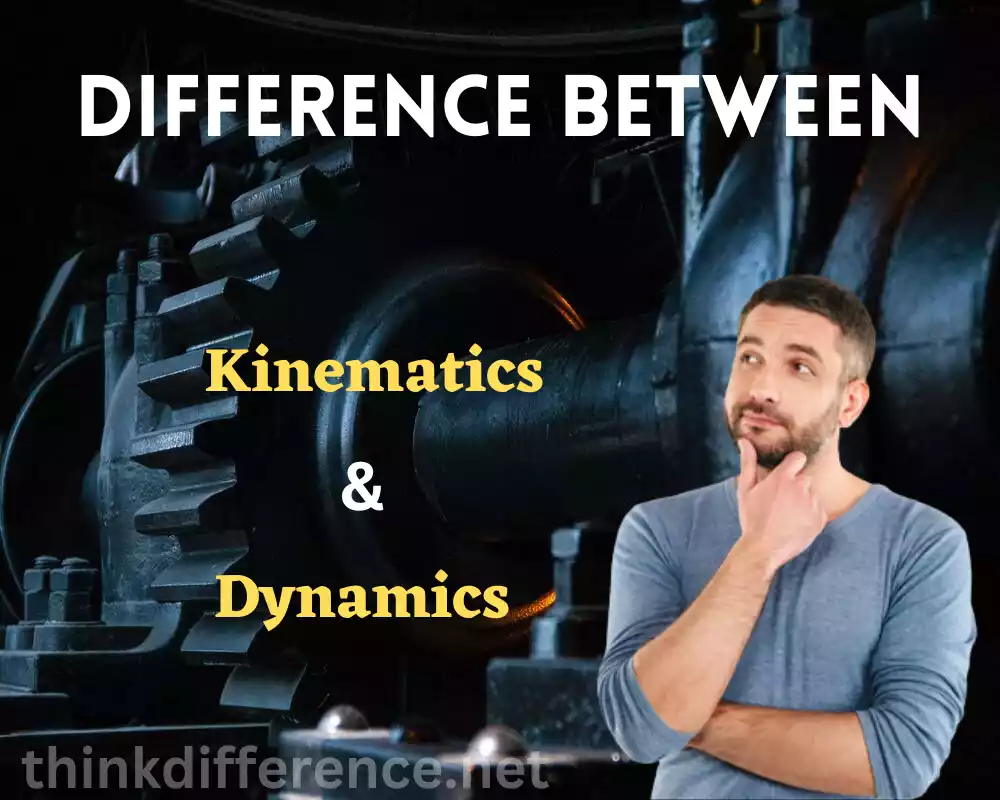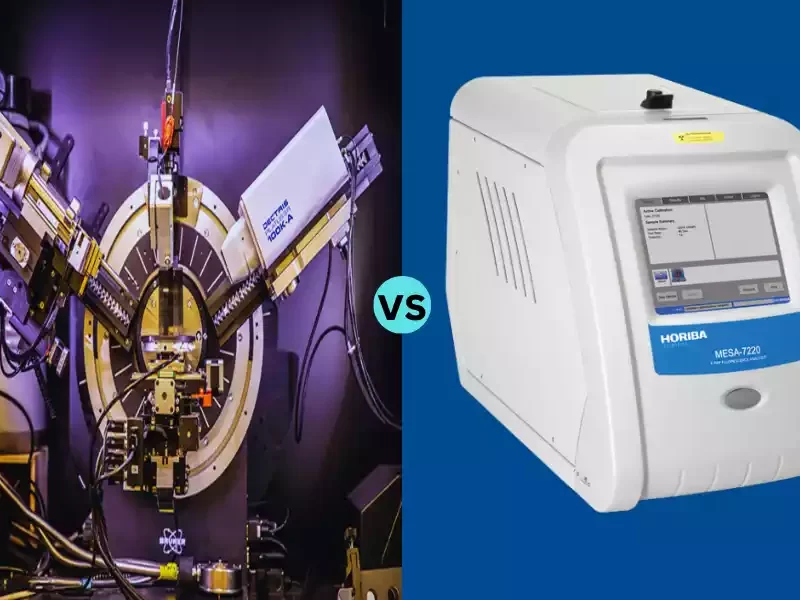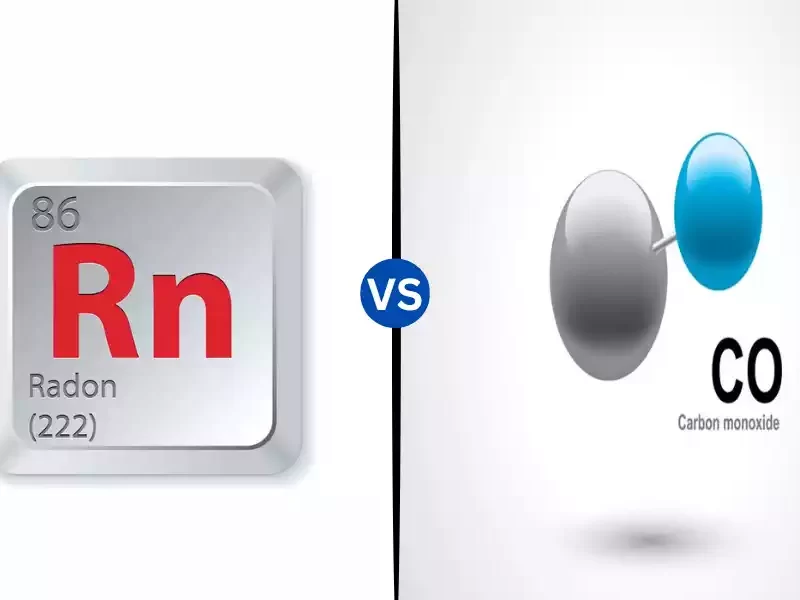Kinematics and Dynamics form the foundation of classical mechanics, which studies the motion of objects without considering the forces causing them. While kinematics focuses on describing motion through parameters such as position, velocity, and acceleration, dynamics explores the relationship between motion and the forces acting upon objects.
Kinematics provides invaluable knowledge for not only physicists, but engineers, athletes, and anyone interested in understanding motion mechanics – not only physicists. By grasping these concepts, we gain insights into how objects move, the factors influencing their motion, and how to optimize various processes in different fields.
Definition of Kinematics
Kinematics, as an area of physics, studies the motion of objects without considering their causes. It analyzes and describes properties such as position, speed, acceleration and time to understand how objects move over time. Kinematics is concerned with quantifying these motions via mathematical formulae and geometric relationships to provide quantitative descriptions for movements that cannot be explained through forces alone.
It considers mathematical relationships to explain and predict this behaviour – playing an essential part in many fields such as classical mechanics and animation.
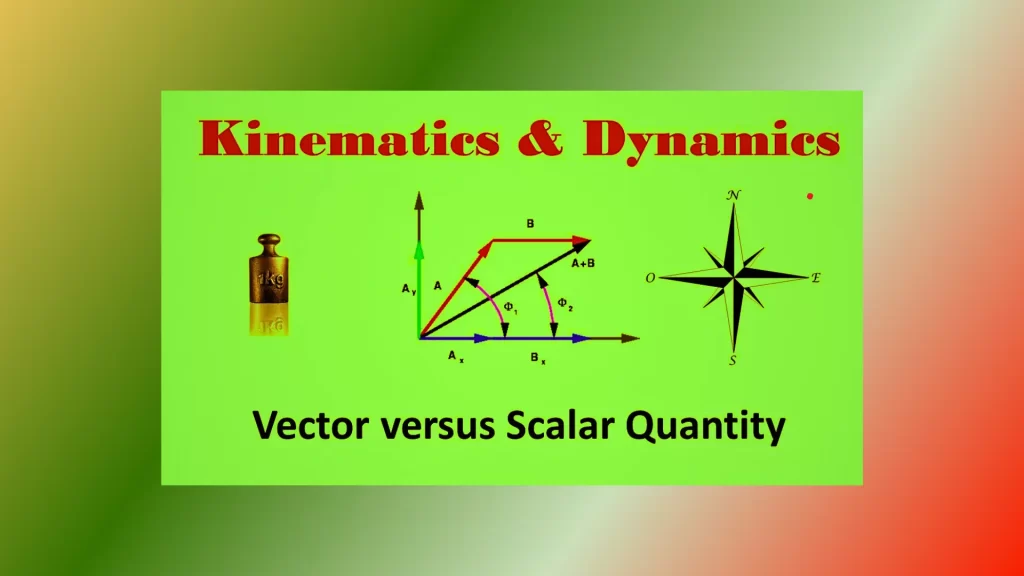
Definition of Dynamics
Dynamics, unlike its cousin Kinematics which only concerns itself with motion itself, examines both causes and effects of movement – from mass, force and momentum relationships through to behavior such as how objects respond to external influences like gravitational force or frictional interactions.
Newton’s laws form the cornerstones for understanding the behavior of objects when subjected to various forces, providing the basic framework to analyze how things move. Newton’s Laws establish relationships among acceleration, mass and force allowing one to predict and analyze object movements when subjected to different kinds of forces.
Dynamism encompasses several concepts like energy, momentum and torque; this course explores their relationships to motion as well as how forces may alter an object’s energy or momentum.
Classical mechanics and engineering both benefit greatly from it, providing tools that design, analyze and simulate mechanical systems; understanding celestial objects’ motion. Projectile trajectory prediction and simulating physical systems’ behavior simulation capabilities are some of its many applications.
Importance of understanding the difference between Kinematics and Dynamics
There are Multiple reasons for which it is vital to understand the differences between Kinematics & Dynamics:
- Conceptual Clarity: Distinguishing between kinematics and dynamics allows for a clear conceptual understanding of motion. Kinematics studies the relationships among motion, position, velocity and acceleration; dynamics addresses causes and effects including forces, mass and laws of motion. By understanding the distinction, one can develop a more comprehensive understanding of the factors that influence and govern motion.
- Problem Solving: Differentiating between kinematics and dynamics is crucial for effectively solving problems related to motion. Kinematics provides the mathematical framework to describe and calculate quantities like displacement, velocity, and acceleration. Dynamic analysis allows one to explore forces and their effect on an object’s motion. By understanding which principles and equations from each branch are applicable to a specific problem, one can approach problem-solving with accuracy and efficiency.
- Engineering and Design: Understanding the differences between kinematics and dynamics when applied to engineering and design are of key importance. Engineers need to analyze and predict the behavior of moving systems, such as machinery, vehicles, or robotic mechanisms. Kinematics helps in designing the geometry and motion paths of these systems, while dynamics provides insights into how forces and interactions affect their performance, stability, and safety.
- Real-World Applications: Kinematics and dynamics find applications in various real-world scenarios. Kinematics is essential in fields such as animation, robotics, and video game development, where accurately portraying motion is crucial. Understanding how physical objects behave is of vital importance in this modern age of transportation and business operations. With that comes understanding the difference between Kinematics and Dynamics which will assist with solving real world issues more easily and analyzing potential solutions more precisely.
Understanding the differences among Kinematics, Dynamics and Engineering can provide a firm foundation for understanding and analyzing motion of objects, providing accurate problem solving as well as effective engineering design projects and practical applications across many fields.
What is Kinematics?
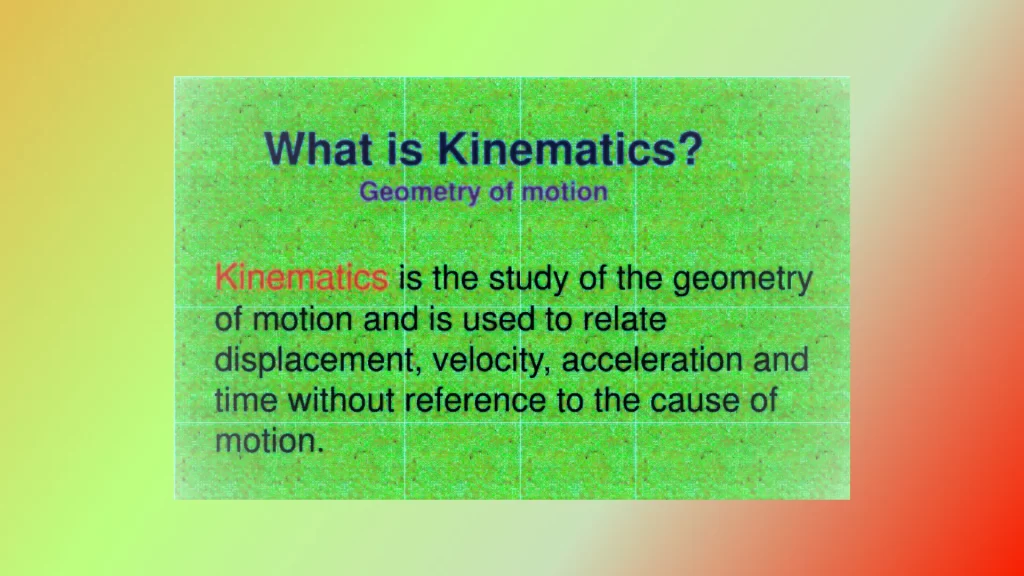
Kinematics, an area of physics, deals with motion analysis and description without considering its causes. It focuses on the mathematical and geometric aspects of motion, providing a framework for quantitatively describing the movement of objects.
Key aspects of kinematics include:
Position: Locating objects within space requires reference points; coordinate systems usually represent their locations as three x-y-z coordinates.
Displacement: It measures the change in position of an object during a specific time interval. Displacement is a vector quantity, meaning it has both magnitude (size) and direction.
Velocity: Velocity represents the rate at which an object changes its position. It is defined as the displacement per unit time. Velocity is also a vector quantity, consisting of magnitude (speed) and direction.
Acceleration: Acceleration refers to the rate at which velocity changes. Acceleration may either be positive (accelerating forward), negative (decelerating in reverse) or at zero.
Time: Time is a fundamental parameter in kinematics, as it allows for the measurement and comparison of different events or changes in motion.
Kinematics uses various equations and formulas to relate these quantities and describe the relationship between position, displacement, velocity, acceleration, and time. Examples include the equations of motion for uniformly accelerated motion, such as the equations for displacement (Δx), initial velocity (v0), final velocity (v), acceleration (a), and time (t):
- Δx = v0t + (1/2)at^2
- v = v0 + at
- v^2 = v0^2 + 2aΔx
Kinematics is essential in fields such as classical mechanics, robotics, animation, and engineering design, providing the basis for understanding and predicting the motion of objects. This allows the analysis of various kinds of motion including circular, linear and projectile movements.
What is Dynamics?
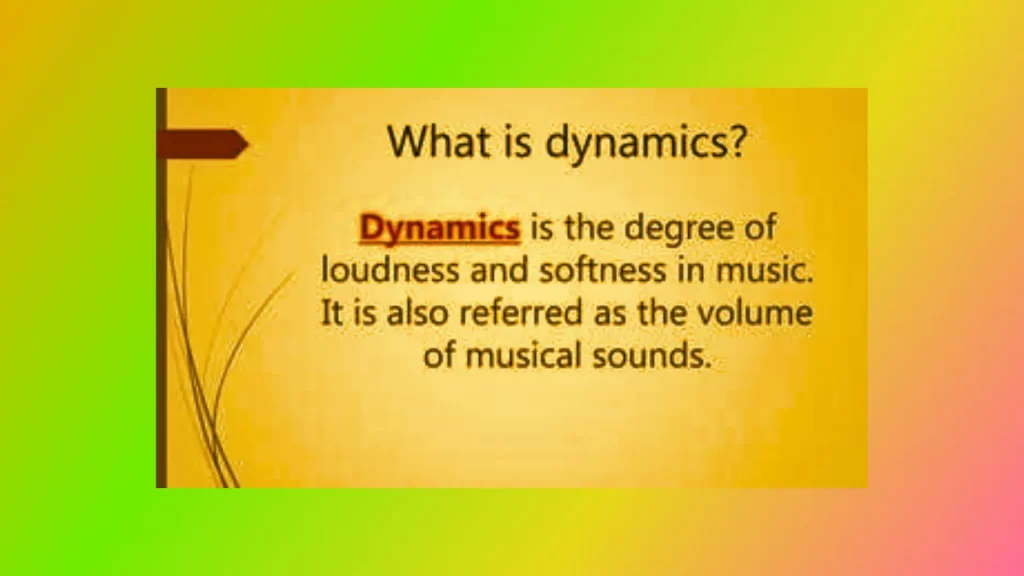
Dynamics in physics studies the causes and consequences of motion. It explores how forces and interactions between objects influence their motion and behavior. Unlike kinematics, which primarily deals with describing motion, dynamics delves into understanding the underlying mechanisms and principles governing that motion.
Key aspects of dynamics include:
- Force: Force is a fundamental concept in dynamics. It is defined as a push or pull exerted on an object that can cause it to accelerate or deform. Forces can be applied externally or arise from interactions between objects. Examples of forces include gravitational force, frictional force, electromagnetic force, and applied forces.
- Mass: Mass is a measure of an object’s resistance to acceleration. An object’s density can be defined as its mass per unit area irrespective of where its location. Mass plays a crucial role in dynamics, as it determines how an object responds to forces.
- Newton’s Laws of Motion: Newton’s laws of motion outline the relationship among mass, force and motion.
- Newton’s First Law (Law of Inertia): An object at rest or in motion will continue in that state unless acted upon by an external force.
- Newton’s Second Law states: The acceleration of any body is directly proportional to the force acting upon it and inversely related to its mass.
- Newton’s Third Law (Law of Action-Reaction): For every action, there is an equal and opposite reaction.
- Equations and Formulas: Dynamics employs mathematical equations and formulas to quantitatively describe the relationship between force, mass, and motion. Newton’s Second Law of Motion is an essential equation governing physical movements. This law asserts that net force acting upon any object equals mass multiplied with acceleration (F = Ma). Various other equations and formulas are used to analyze specific scenarios involving forces and motion, such as frictional forces, circular motion, and gravitational forces.
- Applications: Dynamics finds practical applications in various fields. Mechanical, aeronautical engineering, robotics and astrophysics rely heavily on this skill for understanding object behavior when subjected to forces imposed upon them, making this one essential attribute. Dynamics allows engineers and scientists to analyze the motion of vehicles, design structures to withstand forces, predict the behavior of systems subjected to external forces, and study celestial motion.
Dynamics goes beyond the description of motion and focuses on the causes and effects of motion through the study of forces, interactions, and the laws governing motion. Understanding how objects respond to forces requires using powerful analytical techniques like structural dynamics.
Differences between Kinematics and Dynamics
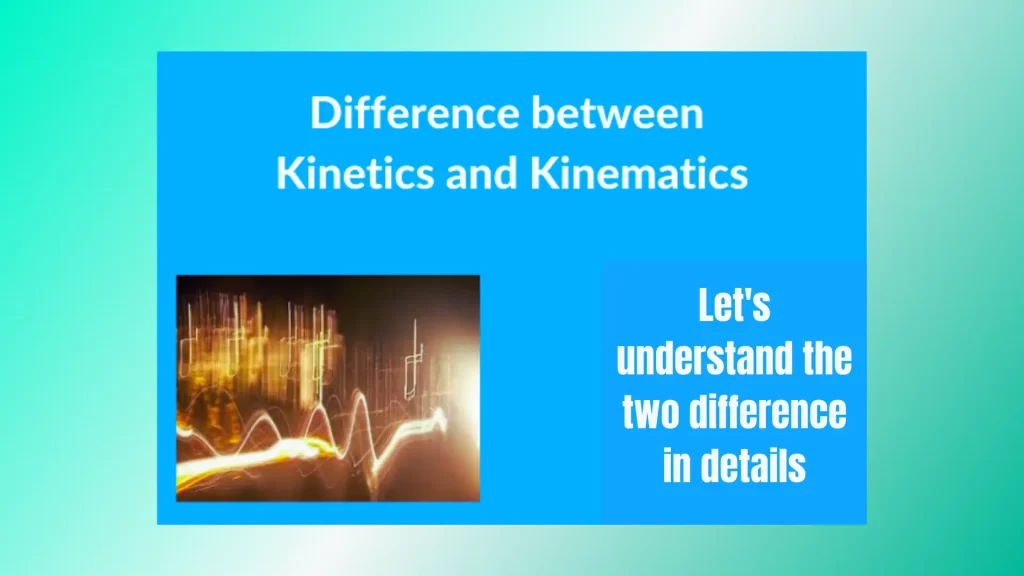
Kinematics differs significantly from Dynamics in several key ways:
- Focus and Scope: Kinematics focuses on the description and analysis of motion without considering the causes of that motion. Dynamism examines concepts related to positioning, displacement velocity acceleration and time. Whereas geodesy primarily considers concepts related to position displacement velocity acceleration and time. Dynamism looks at causes and results of motion by looking at forces interactions relationship mass force acceleration that impact its movements.
- Variables and Concepts: In kinematics, the main variables are position, displacement, velocity, acceleration, and time. These variables describe the geometric and mathematical aspects of motion. In dynamics, the main variables are force, mass, acceleration, and time. Forces are the key concept in dynamics, as they cause or affect the motion of objects.
- Equations and Formulas: Kinematics is the branch of science which deals with motion – particularly their relationships between various variables of motion. Kinematics uses equations and formulas that outline this. These equations involve quantities such as displacement, velocity, acceleration, and time. Dynamics also uses equations and formulas, but they focus on the relationships between force, mass, acceleration, and other factors. Examples include Newton’s second law of motion (F = ma) and equations for calculating forces or friction.
- Causal Relationship: Kinematics does not consider the causes of motion; it only describes and quantifies the motion itself. It treats motion as a given and does not delve into the forces or interactions responsible for the observed motion. Dynamics explicitly considers the forces and interactions that cause or influence motion. It explores the cause-and-effect relationship between forces, mass, and motion.
- Applications: Kinematics finds applications in various fields such as animation, robotics, and engineering design, where accurately describing and simulating motion is crucial. Mechanical, aerospace engineering and astrophysics fields require knowledge of dynamics to comprehend and predict how objects respond under external force influences; its relevance lies within engineering disciplines as mechanical design engineers use dynamics models.
The main difference between kinematics and dynamics lies in their focus and scope. Kinematics deals with the description and mathematical aspects of motion, while dynamics explores the causes and effects of motion, emphasizing the role of forces and interactions. Understanding both kinematics and dynamics are vitally important if one wishes to gain an in-depth knowledge of motion and its principles.
The Relationship Between Kinematics and Dynamics
Understanding Kinematics, Dynamics and Kinetics can be accomplished as follows:
- Kinematics as a Foundation: Kinematics serves as the foundation for dynamics. It provides the mathematical framework and concepts to describe and analyze motion, including variables such as position, displacement, velocity, acceleration, and time. Kinematics establishes the quantitative relationships and equations that form the basis for understanding motion in dynamics.
- Dynamics Building Upon Kinematics: Dynamics builds upon the principles of kinematics by incorporating the role of forces and interactions in influencing the motion of objects. While kinematics focuses on describing motion, dynamics introduces the concept of force and examines how forces affect the motion of objects. Kinematics’ equations and mathematical relationships help predict and analyze how objects will behave when exposed to forces.
- Interplay Between Concepts: The concepts and variables of kinematics and dynamics are interconnected. Kinematics provides the basis for understanding the geometric and mathematical aspects of motion, while dynamics introduces the causal relationship between forces, mass, and acceleration. Dynamics defines acceleration as being determined by both force and mass exerted on an object. This concept was first explored in Kinematics.
- Application of Principles: Understanding both kinematics and dynamics is essential for analyzing and solving real-world problems involving motion. Kinematics provides the tools to describe and calculate quantities such as displacement, velocity, and acceleration, while dynamics enables the analysis of forces and their impact on motion. Applying both principles of kinematics and dynamics allows one to accurately analyze the behaviors and predict future movements of objects under force from forces acting upon them.
Kinematics and dynamics are interconnected branches of physics that together provide a comprehensive understanding of motion. Kinematics establishes the mathematical framework for describing motion, while dynamics introduces the role of forces in influencing that motion.
The concepts and equations from kinematics serve as the foundation for analyzing motion in dynamics, creating a symbiotic relationship between the two fields.
Applications of Kinematics and Dynamics
Applications of Kinematics:
- Robotics: Robots represent one of the fastest-evolved fields today and an in-depth knowledge of their movements and positioning is key for their effective usage. Kinematic principles are used to design and control robot arms, manipulators, and mobile robots, enabling them to perform precise movements and tasks.
- Animation and Visual Effects: Kinematics provides lifelike visuals for video games, movies and virtual reality environments alike, creating virtual worlds by accurately simulating characters, objects and environments in each virtual reality experience.
- Sports Analysis: Kinematics is utilized in sports analysis to study and improve the performance of athletes. Motion capture technology, based on kinematic principles, allows for the precise measurement and analysis of athletes’ movements, helping coaches and trainers optimize techniques and enhance athletic performance.
- Biomechanics: Biomechanics involves studying movement within biological systems. It helps analyze human motion, assess gait patterns, evaluate sports performance, and design prosthetics or orthopedic devices that mimic natural movement.
Applications of Dynamics:
- Engineering and Design: Dynamics is extensively applied in engineering and design fields to analyze and predict the behavior of mechanical systems, structures, and machines. It assists in designing vehicles, aircraft, bridges, and other structures that can withstand various forces and loads.
- Aerospace and Space Exploration: Dynamics is vital in aerospace engineering, enabling the design and analysis of spacecraft, rockets, and satellites. It helps calculate trajectories, predict the behavior of objects in space, and ensure the stability and control of aerospace systems.
- Automotive Industry: Automotive dynamics play an essential part of vehicle design, safety and performance analysis. Understanding factors like acceleration, braking and vehicle stability aid in creating more dynamic and secure vehicles that help create greater vehicle dynamics and safety.
- Mechanical Systems and Machinery: Dynamics is used to study and optimize the behavior of mechanical systems and machines. It assists in analyzing vibrations, balancing rotating components, and designing mechanisms for smooth and efficient operation.
- Celestial Mechanics: Celestial mechanics employs dynamics as part of its study of celestial objects such as satellites, planets and moons in space. Dynamics provides us with insight into their movements to predict and comprehend orbits, celestial events and gravitational interactions among other uses.
Kinematics and dynamics have an array of applications in various fields such as robotics, animation, engineering, biomechanics and space exploration. Kinematics is utilized in tasks involving motion description and control, while dynamics is applied to understand the forces and interactions influencing the behavior of objects and systems.
Real-World Examples
Real-world examples of the application of kinematics and dynamics include:
- Projectile Motion: Kinematics studies the movement of projectiles like baseballs or kicked footballs. By analyzing the initial velocity, angle of projection, and gravitational forces, kinematics can predict the trajectory, maximum height, and range of the projectile.
- Automotive Safety: Dynamics is crucial in the design and testing of automotive safety systems. It helps engineers analyze the forces acting on vehicles during collisions and develop features such as crumple zones, airbags, and seatbelt mechanisms to protect occupants by managing and dissipating the forces involved.
- Robotics Manipulation: Kinematics is utilized in robotics to control the movement and manipulation of robot arms and grippers. By applying principles of kinematics, engineers can determine the joint angles and lengths required to achieve specific end-effector positions, allowing robots to perform precise tasks in industrial automation or surgical procedures.
- Roller Coaster Design: Dynamics is employed in the design and analysis of roller coasters to ensure safe and thrilling experiences. By considering the forces acting on riders, such as gravitational forces, centripetal forces, and friction, dynamics helps engineers create exhilarating rides while maintaining passenger safety.
- Spacecraft Trajectories: Dynamics plays a vital role in space exploration by determining and predicting the trajectories of spacecraft. By considering gravitational forces from celestial bodies, engineers and scientists can calculate the path and timing required for spacecraft to reach their destinations accurately, such as planetary missions or satellite deployments.
- Sports Performance Analysis: Kinematics is used in sports performance analysis to evaluate and improve athletic performance. High-speed cameras and motion capture systems capture the movements of athletes, allowing kinematic analysis to assess factors such as running technique, golf swings, or diving form, aiding in training and performance enhancement.
- Mechanical System Optimization: Dynamics is employed to optimize the performance and efficiency of mechanical systems. For example, in engine design, dynamics is used to analyze the forces, torques, and motions of components to optimize performance, reduce vibrations, and increase fuel efficiency.
- Astronomical Motion: Kinematics and dynamic are used when studying celestial objects such as planets, moons and stars for their movement through space. By analyzing their positions and velocities over time, astronomers can understand the dynamics of celestial bodies, predict astronomical events, and investigate phenomena like orbital mechanics and gravitational interactions.
These examples demonstrate how kinematics, dynamics and other branches of physics can be utilized to analyze and optimize real world systems or phenomena.
Conclusion
Kinematics and Dynamics play pivotal roles in unraveling the mysteries of motion that surround us. From the graceful dance of celestial bodies to the smallest particles vibrating ceaselessly, these branches of physics enable us to comprehend the intricacies of the physical world. By studying the various types of motion, equations of motion, forces, inertia, and energy, we can make sense of the phenomena happening around us.
Whether it’s understanding the trajectory of a projectile, the harmony of simple harmonic motion, or the elegance of planetary orbits, the principles of Kinematics and Dynamics continue to shape our understanding of the universe. They form the bedrock of modern engineering, helping us build innovative technologies and improve our daily lives.

